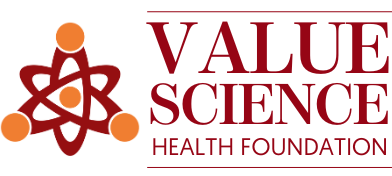Introduction
Cost-utility analysis (CUA) is increasingly used in healthcare decision-making for funding, reimbursement, and pricing of new interventions. Health Technology Assessment (HTA) agencies such as the UK’s National Institute for Health and Care Excellence (NICE) provide efficiency information on drugs and devices, recommending the use of quality-adjusted life years (QALYs) focused on individual patient outcomes.
HTA agencies have varied views on including spillover effects, which refer to the health and well-being impacts on family members and caregivers. NICE guidelines suggest considering caregiver health effects when relevant, while the Canadian Agency for Drugs and Technologies recommends including caregiver spillovers in the reference case if both patients and caregivers are targeted. The US Second Panel on Cost-Effectiveness in Health and Medicine advises including caregiver productivity costs in the reference case analysis.
The Unwell Child
Paediatric illnesses (including congenital disorders, infectious diseases, and developmental disorders), affect infants, children, and adolescents. Children with chronic illnesses or disabilities often need comprehensive caregiving for daily activities and frequent medical treatments. Families provide essential services, but caring for an ill or disabled child imposes significant financial, health, and well-being burdens on parents, siblings, grandparents, and other relatives.
Family spillover effects in paediatric health interventions are crucial yet often overlooked in economic evaluations. Understanding these effects can lead to more comprehensive and accurate assessments of healthcare interventions. This paper published in PharmacoEconomics reviews the significance of family spillover effects, the challenges in measuring them, and the implications for HTA agencies and researchers.
Significance of Family Spillover Effects
Family spillover effects refer to the broader impacts of a child’s health condition on their family members. These effects can include emotional stress, financial burden, and changes in health-related quality of life (HRQoL). For instance, parents of children with chronic illnesses often experience increased anxiety and depression. Siblings may also face emotional and social challenges. Recognising these effects is essential for a holistic evaluation of paediatric health interventions.
Table 1. Definitions of Terms
| Term | Definition |
| Spillover effects | Term commonly used to connote the health and well-being effects of illness and treatment on family members and caregivers of patients of any age. Caregivers may belong to the patient’s family or be from outside the family |
| Family spillover costs | The effects of a child’s illness or disability on the economic well-being of family members or the family as a whole. This includes out-of-pocket expenditures or copayments by parents for medical or nonmedical services and other household expenditures for the child’s health or their own health as a result of the child’s health condition. It also includes productivity costs associated with the loss of employment or reduced hours for paid or unpaid labor, and the loss of leisure time due to caregiving by family members |
| Family spillover effects | The health and nonhealth effects experienced by family members as a result of a child’s illness, disability, and treatment encompassing physical health, psychological health, emotional well-being, quality of life, overall well-being (including happiness and life satisfaction), and bereavement. These family spillover effects arise from two distinct sources: (1) the caregiving effect and (2) the family effect |
| Caregiving effects* | The health and nonhealth effects related to physical health, psychological health, emotional well-being, quality of life, and overall well-being (including happiness and life satisfaction) on family member caregivers, resulting directly from performing physically or emotionally demanding care tasks, often over extended periods of time |
| Family effects* | The direct impact of a patient’s illness or disability on the physical health, psychological health, emotional well-being, quality of life, and overall well-being (including happiness and life satisfaction) of family members. It occurs when family members witness the suffering, decline or death of their loved one, e.g., the child |
*In families with a child with illness/disability, caregivers are often family members such as the father, mother or both. Therefore, both family effects and caregiving effects are likely to occur in parents.
Challenges in Measuring Spillover Effects
A review of pediatric CUAs from a societal perspective published between 2000 and 2015 revealed that out of 142 studies, 103 (73%) considered family spillover costs, but only 15 (11%) included family spillover effects in terms of caregiver health outcomes. A review of published NICE technology appraisals for both adults and children found that only 16 out of 414 appraisals included health effects on caregivers or family members.
Despite growing recognition of the importance of family spillover effects in paediatric CUAs, only a small proportion of studies include them due to the methodological challenges in measuring and incorporating spillover effects. These challenges include identifying which family members to include in the analysis. Typically, parents are the primary focus, but siblings and other caregivers can also be significantly affected. Another challenge is quantifying these effects accurately. Researchers need robust methods to capture changes in HRQoL and economic impacts on family members. Moreover, establishing causal relationships between a child’s health and family members’ well-being is complex and requires careful consideration.
Implications for Health Technology Assessment Agencies
HTA agencies play a pivotal role in incorporating family spillover effects into economic evaluations. Current guidelines suggest including direct health effects on carers but lack specific instructions on family spillover effects. To address this gap, HTA agencies should develop clear guidelines for measuring and incorporating these effects. This could involve extending the time horizon of studies to capture long-term impacts on family members and using comprehensive data collection methods.
Future Research Directions
Future research should focus on developing standardised methods for measuring family spillover effects. This includes creating tools to assess HRQoL changes in family members and establishing criteria for diverse paediatric conditions. Measuring long-term spillover effects and using matched-comparison groups can also help identify causal relationships between a child’s health and family members’ well-being.
Conclusion
Incorporating family spillover effects in paediatric health interventions is essential for comprehensive economic evaluations. By recognising the broader impacts on family members, policymakers and healthcare providers can make more informed decisions. Future research and updated guidelines from HTA agencies will be crucial in standardising the measurement and inclusion of these effects. Ultimately, this will lead to better resource allocation and improved outcomes for both children and their families.




